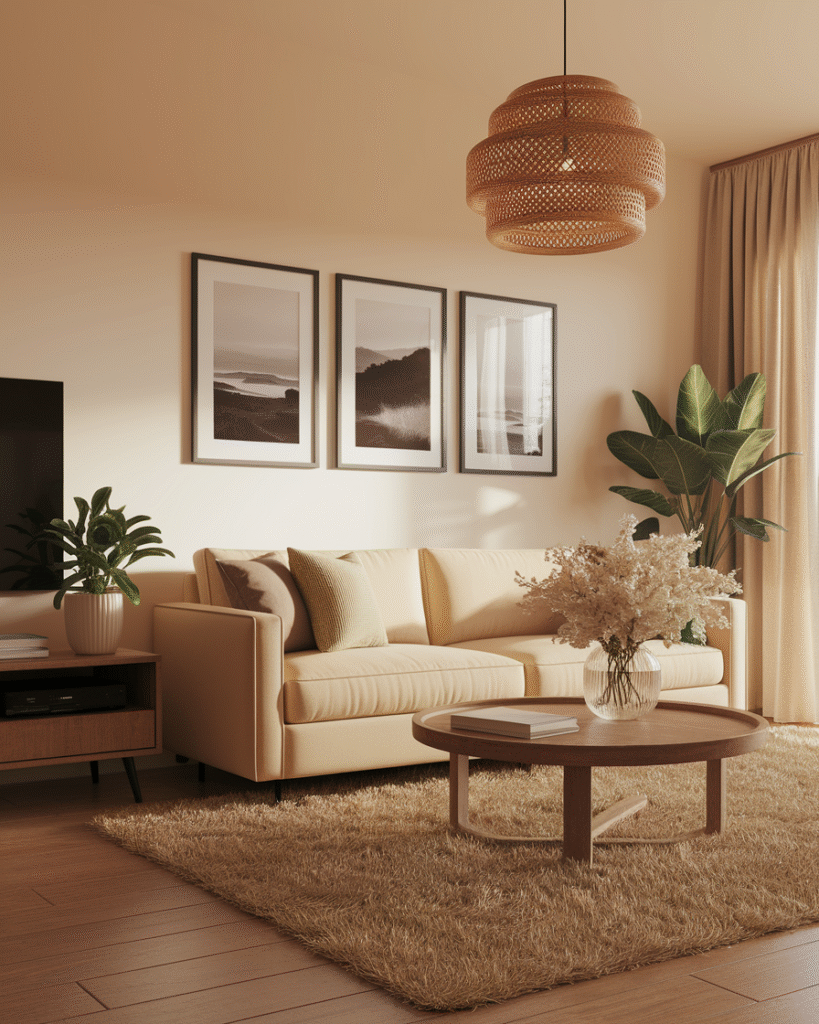Discover 10 amazing neutral living room decor ideas to create a serene, stylish, and incredibly inviting sanctuary. Find your calm today!
Introduction
Imagine stepping into your living room after a long day, and instantly feeling a wave of calm wash over you. No visual clutter, no jarring colors, just a soothing embrace of sophisticated simplicity. This is the magic of neutral living room decor ideas. Far from being boring, a neutral palette offers an unparalleled foundation for creating a truly serene living room design – a space that acts as a quiet retreat from the bustling world outside.
The Power of the Palette: Choosing Your Core Neutrals
The foundation of any successful neutral living room design lies in selecting your core colors. Forget the misconception that “neutral” just means beige. The spectrum is vast and nuanced, encompassing a beautiful array of whites, creams, grays, beiges, and even soft, earthy tones.
- Cool Neutrals: Grays, off-whites with blue or green undertones, and subtle taupes fall into this category. They offer a more crisp and contemporary feel, often lending themselves to sleek, modern designs.
- Greige: The ultimate chameleon color, greige (a blend of gray and beige) offers the best of both worlds. It adapts well to various lighting conditions and pairs seamlessly with both warm and cool accents. For an in-depth look at greige, check out this article on Elle Decor’s take on the color.
- Off-Whites: Don’t underestimate the power of a well-chosen off-white. From crisp gallery white to soft antique white, these shades create a bright and airy feel, making a room feel larger and more open. Consider the various undertones – some lean yellow, some pink, some blue. A great resource for understanding white paints is Sherwin-Williams’ guide to white paint colors.
Textural Harmony: Layering for Depth and Interest
One of the most common mistakes people make when implementing neutral living room decor ideas is neglecting texture. Without it, a neutral space can indeed fall flat. Texture is what brings a room to life, adding depth, warmth, and visual interest without introducing jarring colors. This is crucial for achieving a truly serene living room design.
- Rugs: An area rug is essential for defining the living area and adding a significant layer of texture. Consider natural fiber rugs like jute or sisal for an organic, grounded feel. For a softer touch, a wool rug with a subtle pattern or a high-low pile can add warmth and sound absorption. For inspiration on layering textiles, explore Architectural Digest’s insights on textured interiors.
- Wood and Woven Elements: Incorporate natural wood in furniture pieces like coffee tables, side tables, or shelving. The grain of the wood adds inherent texture and warmth. Woven elements, such as rattan chairs, wicker baskets, or bamboo shades, bring an artisanal, organic feel and are fantastic for neutral home interior ideas.
- Ceramics and Stone: Display decorative ceramic vases, bowls, or sculptural pieces in matte finishes. Consider a stone-topped coffee table or a mantelpiece made of travertine for a sophisticated, tactile element. These materials bring an earthy, grounding presence.
Steps to Achieve Minimalist Living Room Decor
Embracing minimalist living room decor within a neutral framework is about intentionality and purpose. Every item should earn its place, contributing to the overall sense of calm and clarity.
- Declutter Ruthlessly: Before adding anything new, remove everything that doesn’t serve a purpose or bring you joy. A cluttered space can never be truly serene. This is the foundational step for any neutral living room decor ideas.
- Define Your Palette: Choose your core neutrals (e.g., warm white, light gray, and natural wood tones) and stick to them for major pieces. You can introduce very subtle variations, but consistency is key.
- Invest in Key Pieces: Opt for well-made, comfortable furniture in your chosen neutral fabrics. A good quality sofa and a sturdy coffee table are worth the investment as they form the backbone of your design.
- Embrace Negative Space: Don’t feel the need to fill every corner. Empty space allows the eye to rest and enhances the feeling of openness and tranquility.
- Curate Accessories: Instead of many small knick-knacks, choose a few larger, impactful accessories. Think a sculptural vase, a large art piece with a neutral palette, or a beautiful ceramic bowl.
- Incorporate Greenery: Plants are essential for bringing life and natural texture into a neutral space. Choose plants with interesting leaf shapes or simple, elegant planters (terracotta, unglazed ceramic, or concrete).
- Layer Rugs: For added warmth and depth, consider layering a smaller, softer rug (like a sheepskin) over a larger, textured base rug (like jute or wool).
- Vary Heights: Create visual interest by varying the heights of your furniture and decor. A tall floor lamp next to a low sofa, or art hung at different levels, keeps the eye moving.
- Consider Built-Ins: If possible, built-in shelving or cabinetry can provide seamless storage, keeping clutter out of sight and maintaining clean lines essential for minimalist living room decor.
- Add Personal Touches (Thoughtfully): While maintaining neutrality, incorporate personal elements like a few framed black and white photos, a cherished heirloom with a natural patina, or books with aesthetically pleasing covers. These make the space uniquely yours without overwhelming the calm.
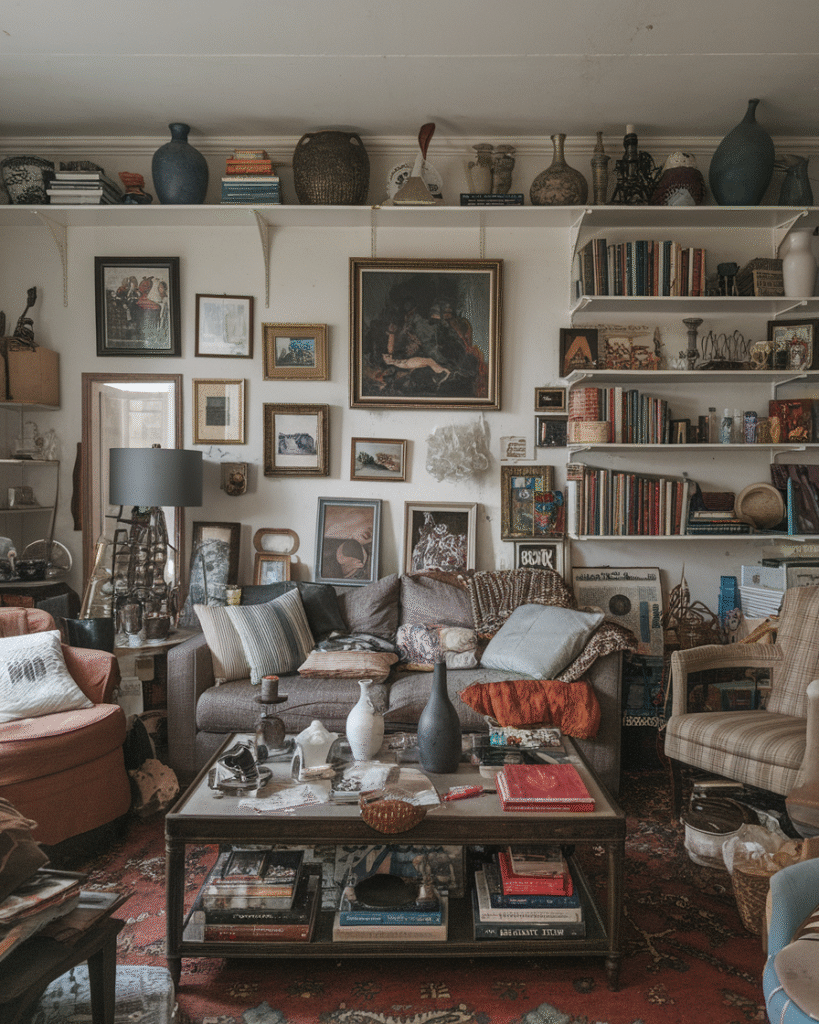
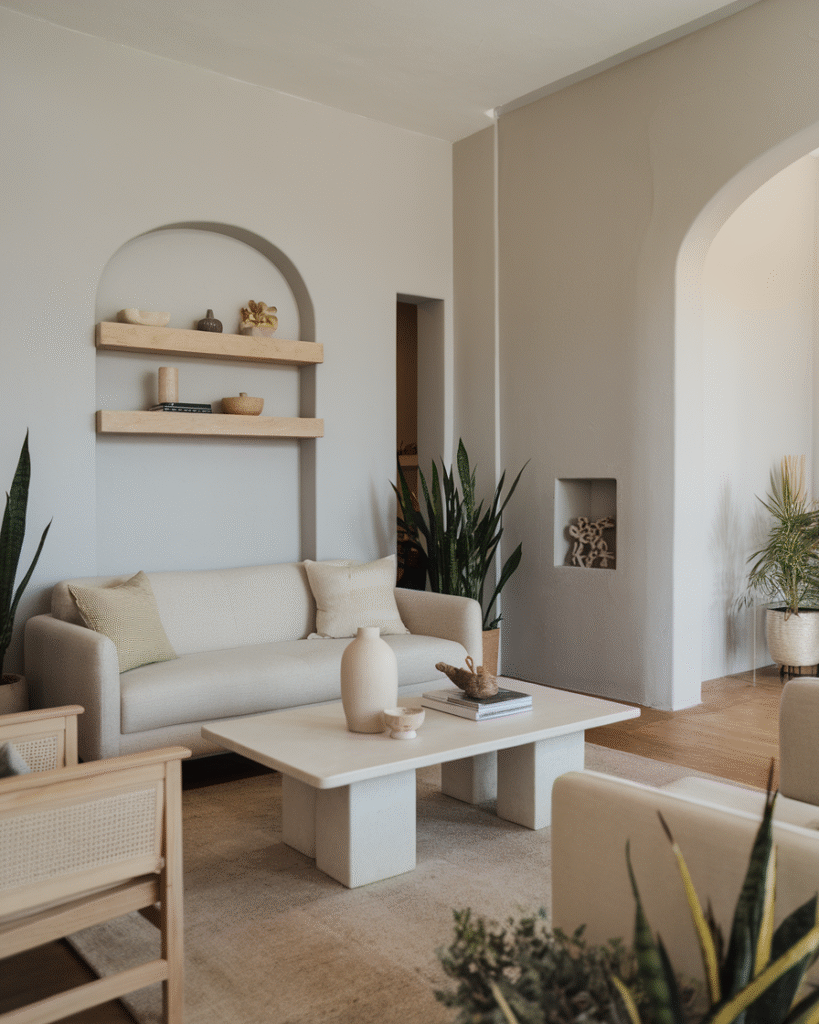
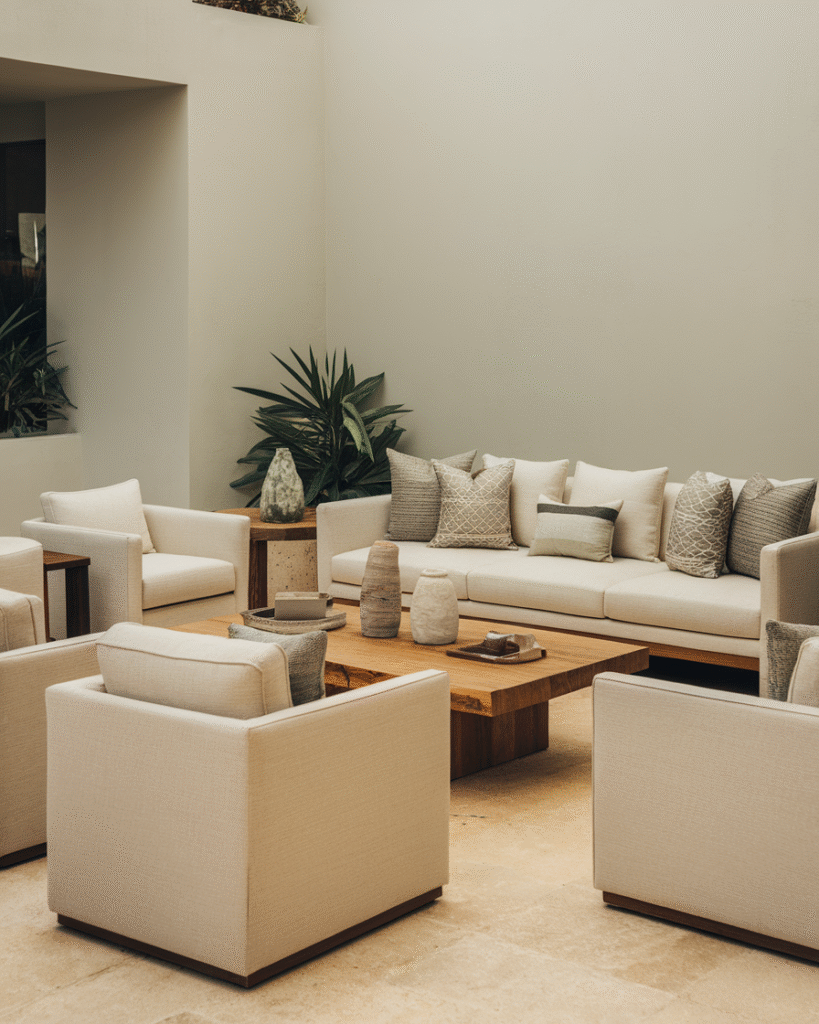
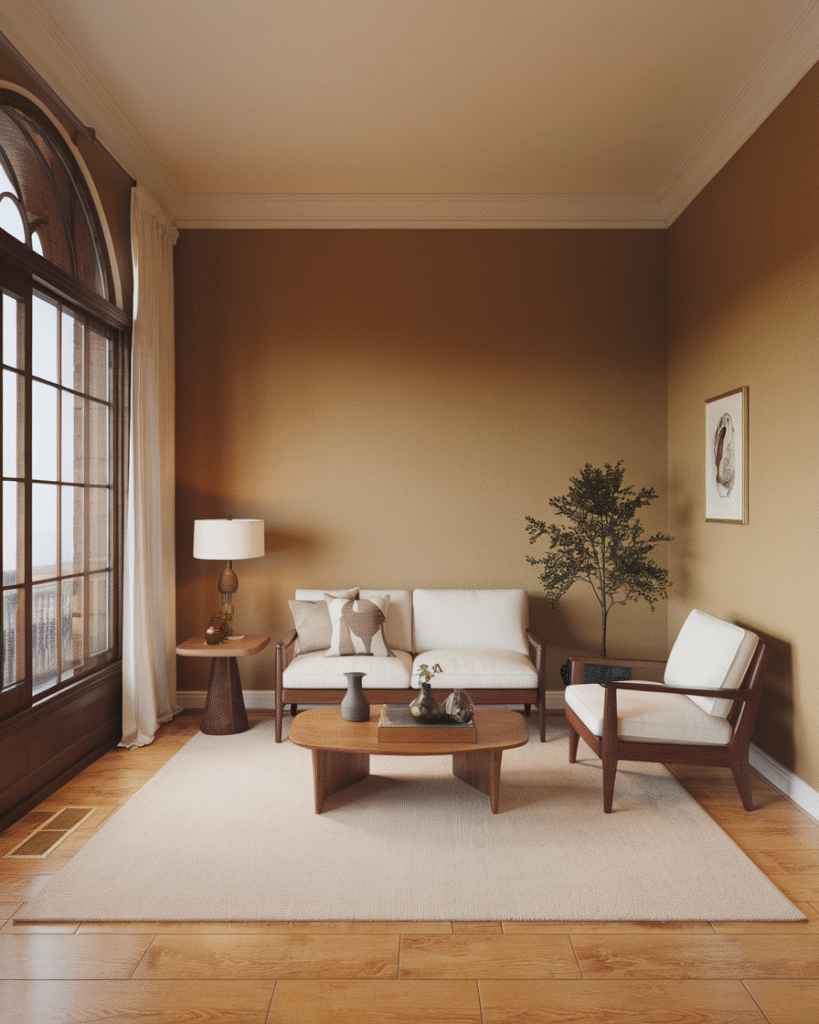
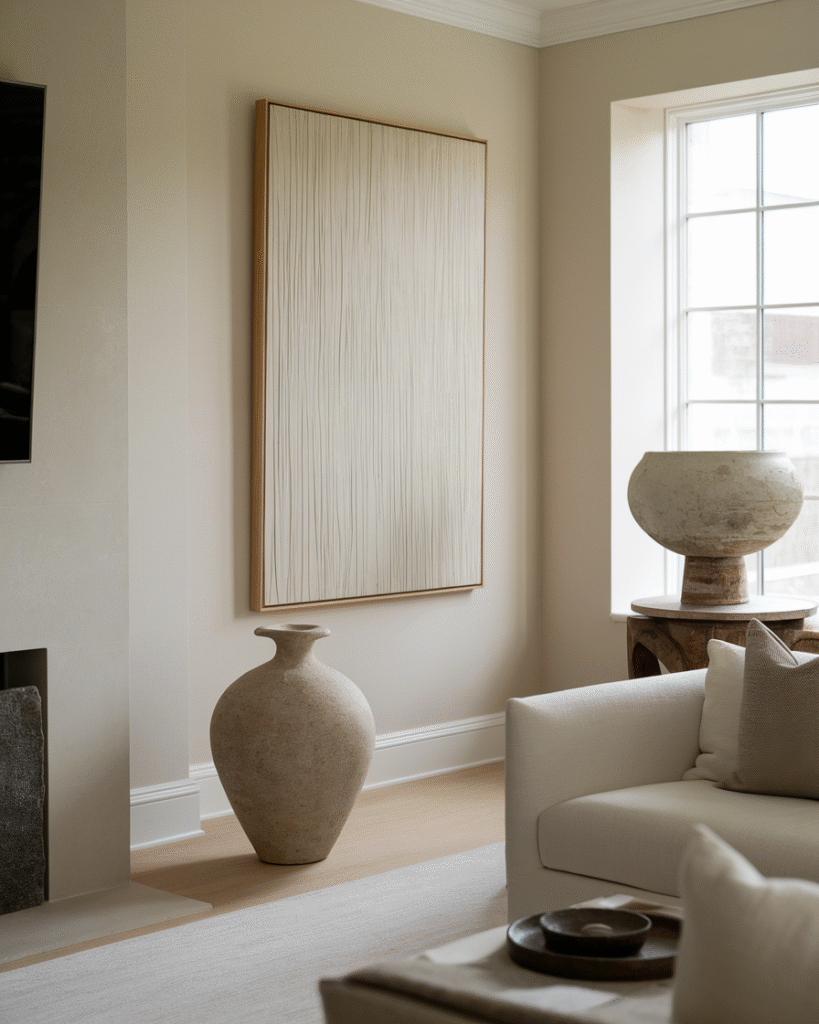
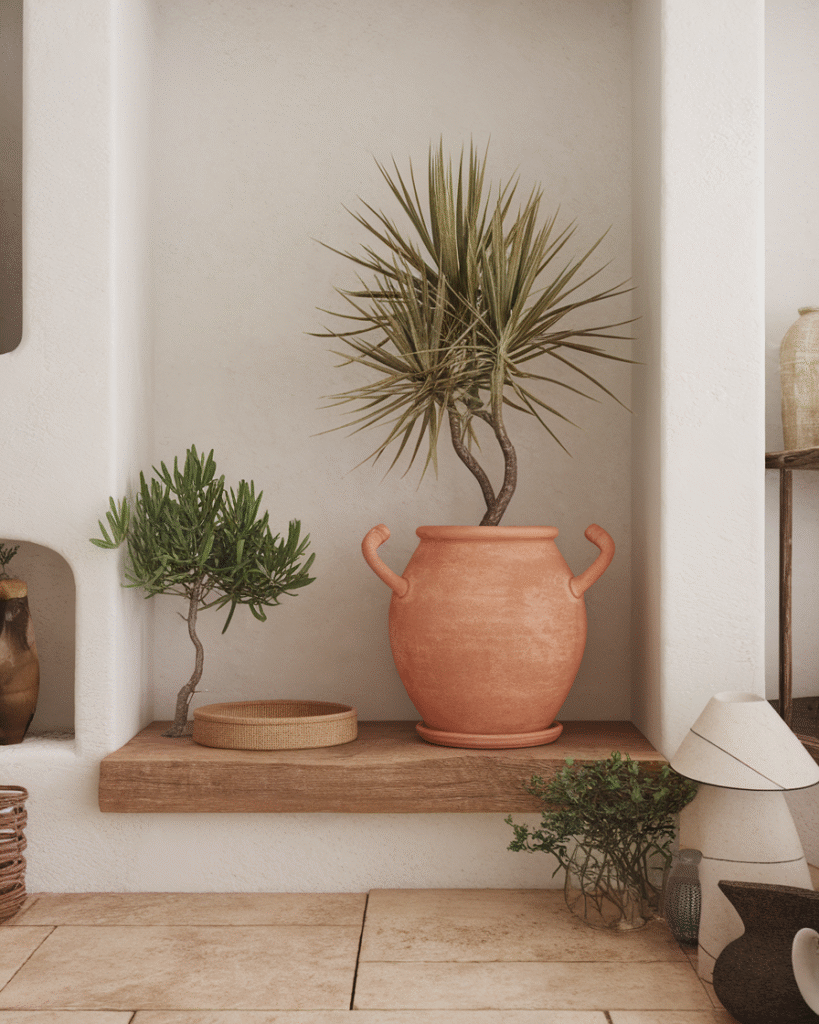
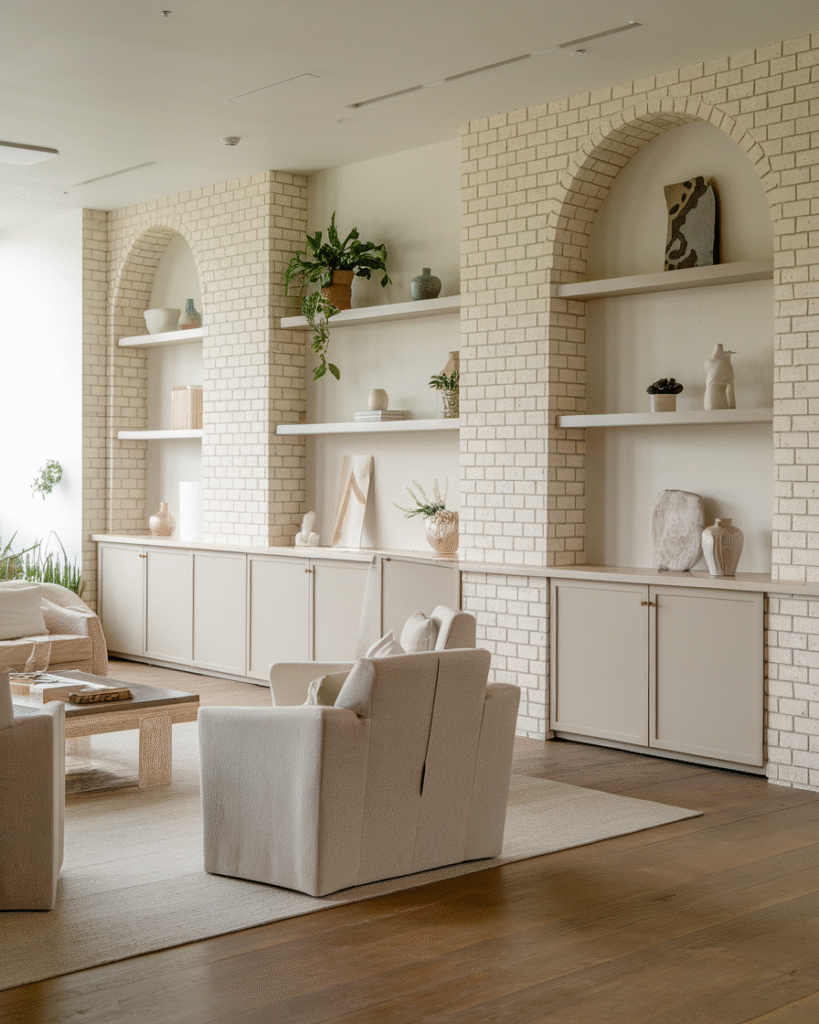
FAQ Section
Q1: Won’t a neutral living room look boring or bland? A: Absolutely not! While a neutral palette may lack vibrant colors, it thrives on texture, layering, natural materials, and subtle variations in shade. The focus shifts from bold hues to sophisticated details, creating a refined and elegant space that is anything but boring. It offers a timeless and versatile backdrop that allows your personal style to emerge through curated accents.
Q2: How do I add personality to a neutral living room without adding too much color? A: Personality in a neutral living room comes through texture, natural elements, meaningful artwork, and carefully selected decorative objects. Incorporate different materials like linen, wool, wood, metal, and ceramics. Introduce plants for a pop of natural green. Choose artwork that resonates with you, whether it’s abstract, photography, or sculptural. Even a collection of well-chosen books can add character. The key is curation and thoughtful placement, rather than a riot of color.
Q3: Are neutral living rooms good for families with kids or pets? A: Surprisingly, yes! Neutral palettes, especially those leaning towards warmer tones like beige or greige, can be quite forgiving. Opt for durable, stain-resistant fabrics like performance velvets, treated linens, or outdoor fabrics for upholstery. Darker neutrals like charcoal gray or deep taupe can also be very practical. Patterned rugs in neutral tones can help hide minor spills. The key is choosing the right materials and finishes for your lifestyle.
Q4: What’s the best way to incorporate natural elements into a neutral living room? A: Natural elements are essential for adding warmth and authenticity to neutral spaces. Think beyond just plants. Incorporate wooden furniture with visible grain, woven baskets and light fixtures, stone or concrete accents (like a fireplace surround or sculptural object), and natural fiber rugs (jute, sisal, wool). Even elements like dried pampas grass or branches can bring an organic, serene touch.
Conclusion
Embracing neutral living room decor ideas is an invitation to create a home that is truly a sanctuary. By focusing on a harmonious palette, rich textures, thoughtful furnishings, and strategic lighting, you can transform your living space into a haven of calm and elegance. These serene living room design principles offer timeless appeal and incredible versatility, allowing your home to evolve with your needs while always providing a sense of peace.

